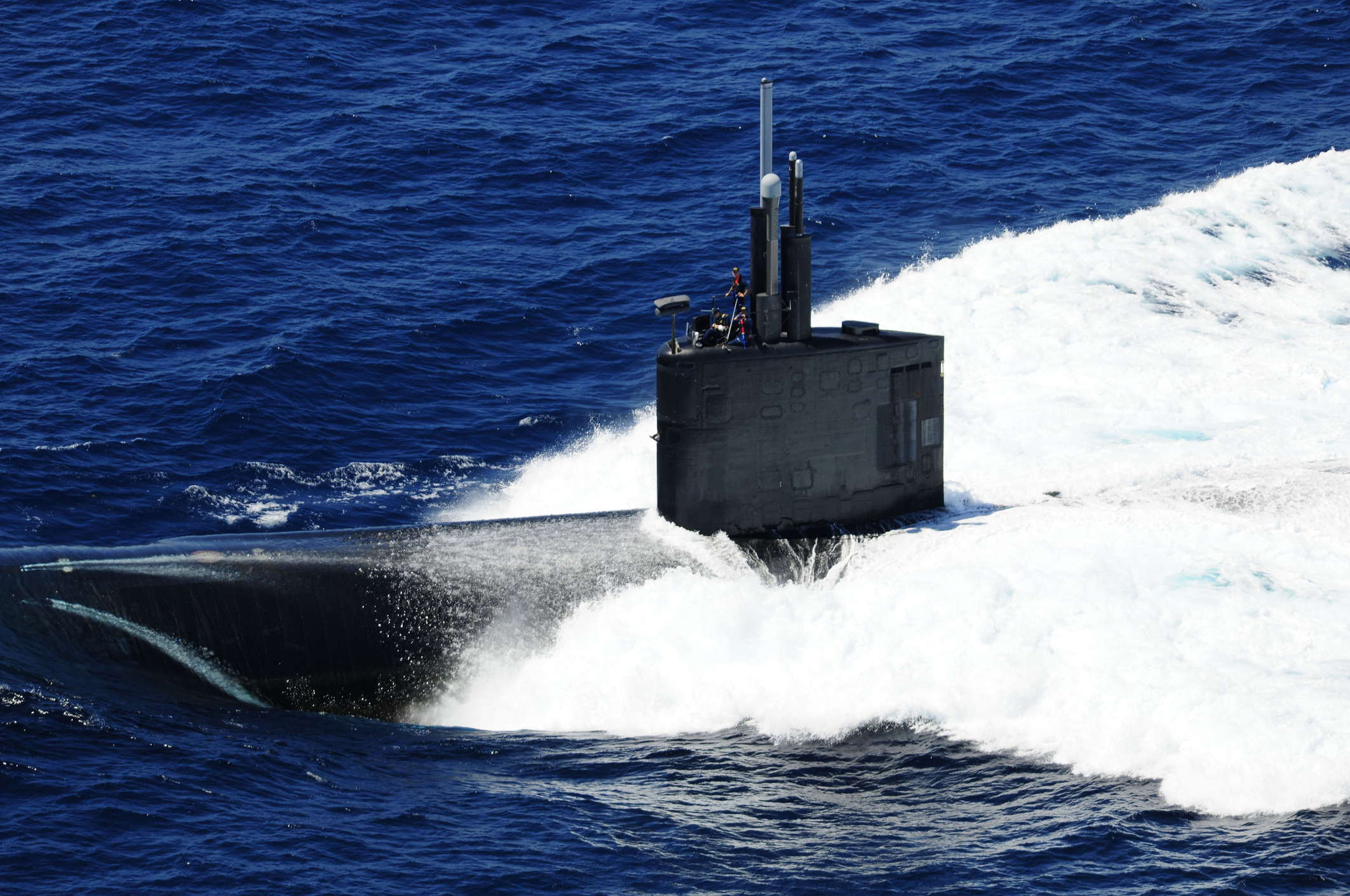Two of New England’s flagship universities and the United States Navy’s primary builder of submarines are at the helm of the new National Institute for Undersea Vehicle Technology.
Located on the Connecticut coast, the new national institute was established to develop the personnel and knowledge to accelerate critical research and enhance U.S. dominance in submarine and other undersea technologies.
It is a joint effort between the engineering schools at the University of Connecticut, University of Rhode Island, and General Dynamics Electric Boat, recognizing the rich history of the region, which has been a hub for development of the technologies and the workforce that advances the national undersea arsenal.
“This initiative demonstrates the tremendous potential for innovative collaboration not only between universities, but in partnership with industry leaders and government,” says UConn President Susan Herbst. “On behalf of UConn, I am very excited that our institution is a key player in this important work.”
Headquartered at the UConn Avery Point campus, the National Institute for Undersea Vehicle Technology capitalizes on a close proximity to the naval submarine base in Groton, Connecticut, as well as to Electric Boat’s facilities in Connecticut and Rhode Island, the main campuses of both UConn and URI, the Naval Undersea Warfare Center, and the Naval War College. A cooperative research and development agreement with the Naval Undersea Warfare Center in Middletown, Rhode Island, furthers the regional significance of the institute.
The shipbuilding industry in the Northeast is a crucial contributor to the U.S. Navy’s undersea fleet, with expertise in submarines and other vehicles both manned and unmanned, and technologies that can operate in all areas of the underwater landscape, from shallow tidal areas to the deep ocean.
Many companies throughout the two states contribute to the national supply chain for undersea vehicles, and the synergies will benefit the states’ economies and workforce. The national institute will leverage these major naval resources across southeast New England to develop and accelerate the transition of innovative technologies to the U.S. undersea fleet.
“This institute will help industry support the desire to deploy new undersea capabilities more rapidly,” says Kurt Hesch, chief operating officer at General Dynamics Electric Boat. “The intellectual horsepower and the state-of-the-art research facilities at the universities provide the tools necessary to research technologies so that industry partners can transition them for integration onto undersea vehicles.”
Recent expansion in global access to technology has threatened U.S. dominance in undersea warfare. The national institute will build upon the experience and expertise of Electric Boat, UConn, and URI to bring promising innovations from the lab to commercial readiness faster and more cost-effectively, while training the next generation of engineers and technologists.
As an example of the national institute’s efforts, a recently awarded three-year, $1.3 million Office of Naval Research STEM grant to UConn and URI will facilitate opportunities that prepare undergraduates to join the shipbuilding industry.
“As Land Grant and Sea Grant institutions, URI and UConn are uniquely positioned to undertake cutting-edge research, in collaboration with our close partners, and then assist in the development of our innovations to improve national and global security,” said URI President David M. Dooley. “Our universities are engaged in the scientific exploration of our oceans and the invention of new undersea technologies that facilitate the creation of the next generation of undersea vehicles.”
The establishment of the National Institute for Undersea Vehicle Technology expands the benefits that current research at the two universities provide the Navy. Throughout the past decade, UConn and URI have pursued more than 140 research projects in areas that advance the technology and understanding of undersea warfare.
Among the other research projects UConn and URI have embarked upon with the Navy since 2007:
- Multidisciplinary University Research Initiative rational design of advanced polymeric capacitor films;
- Blast performance of marine composite and sandwich structures and experimental investigation of free field and shock-initiated implosion;
- Exploring uncertainty in real-time hybrid substructuring of marine systems;
- Sensor networks for multiple target tracking;
- Automated 3-D target reconstruction and classification using distributed passive sensors for persistent surveillance;
- Development and testing of undersea gliders;
- Low-cost acoustic transmitters;
- An interactive wave sediment profiler.



